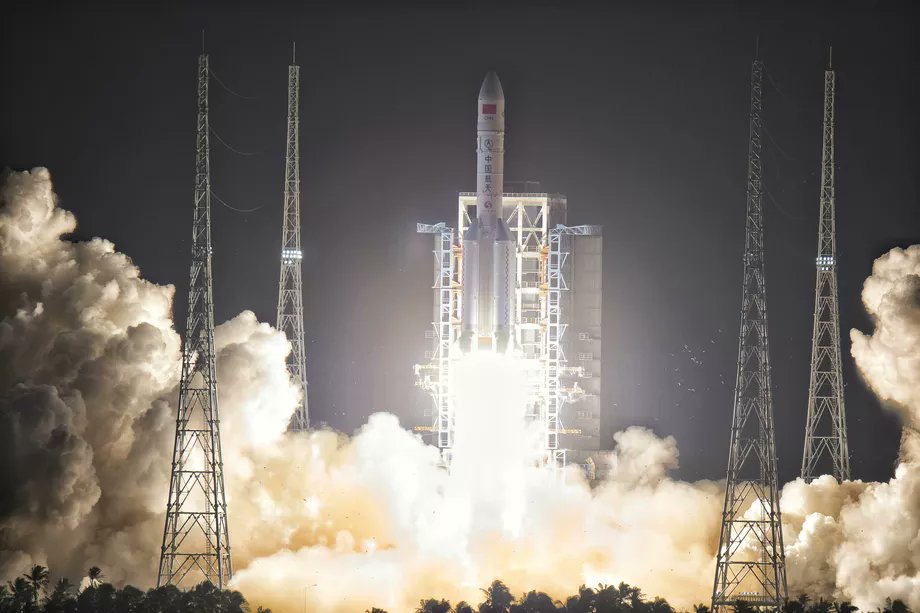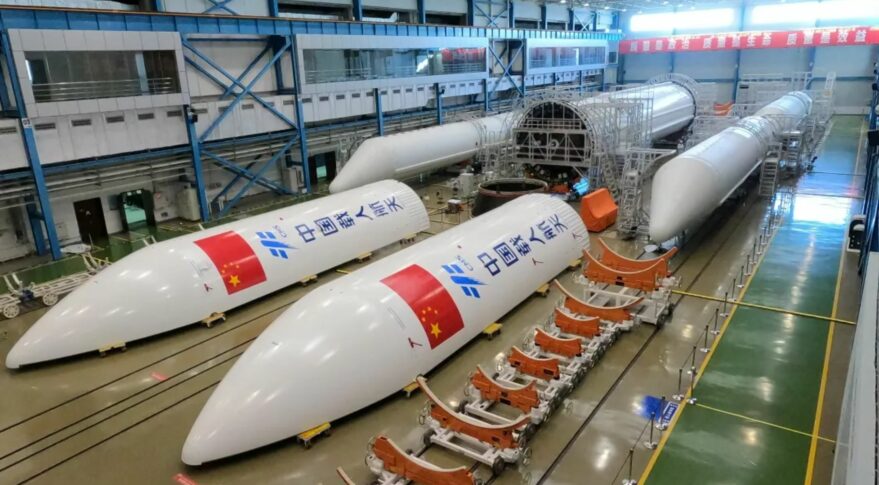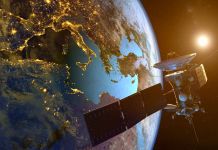China’s Long March family of rockets has been deployed in most of the country’s space missions since its first flight in 1970. The indigenous rocket recently completed its 400th launch mission.
The mission was conducted by a Long March 4B rocket on the morning of December 10. The rocket carried Shijian 6-05 satellites, according to reports.
From the launch of the Tianlian-2-1 relay satellite by the Long March 3B till the latest mission involving the Long March 4B, it took less than 3 years (33 months), for the rocket family to accomplish the 400th launch mission, thus renewing the fastest record in the country’s aerospace history, China’s state-owned media outlet Global Times reported.
Since 1970, the Long March carrier rockets have been involved in 92.1 percent of China’s space launch missions.

According to scientists at the state-owned China Aerospace Science and Technology Corporation (CASC), the first 100 launches were completed in over 37 years. The second 100 launches were accomplished in a span of seven and a half years, the third took four years and three months, and the fourth only took two years and nine months, Xinhua Net reported.
A Fully Indigenous Rocket
The latest achievement of the Long March family was not easy to accomplish, space industry analysts said.
“The primary reason behind the resilience of China’s Long March family amid the pandemic is that it is equipped with fully domestically-built and controllable technology,” Song Zhongping, a space analyst and TV commentator, told the Global Times on December 12.
During the 4th 100 launched period, the Long March rockets fulfilled several key missions — they carried China’s Tianhe space station core module, Shenzhou manned spacecraft, Chang’e-5 lunar probe and the country’s first interplanetary Tianwen-1 Mars exploration mission, according to reports.
The fourth hundred launches are said to be the foundation for China’s aerospace industry moving “from quantitative change to qualitative change, and an important milestone for China to fully start building a space power nation”, CASC developers said in a statement.
The China Academy of Launch Vehicle Technology (CALT), which is a subsidiary of the CASC and is also the main contractor and designer of the Long March rocket family, said that the academy is currently working on developing two types of heavy-duty carrier rockets.

The new rockets would be stronger than the Long March-5 and are capable of supporting future manned space missions and sending large probes into deep space. Known as the ‘new-generation manned rocket’, one of them is going to be a 90-meter-tall, three-stage model with an escape tower on the top.
The rocket will also have a weight-at-launch of 2,000 tons, and will be capable of sending a payload of 25 tons to the lunar transit orbit, or a payload of 70 tons to the new-Earth orbit.
“The other new model will be the 100-ton level heavy-lift carrier rocket, which is under the CALT development and is expected to take maiden flight by 2028. It is capable of sending a payload of up to 140 tons to the near-Earth orbit and a payload of up to 50 tons to the lunar transit orbit or maximum of 44 tons to the Mars transit orbit,” the academy told Global Times.
According to analysts, the US is hyping China’s fast progress in the field of space exploration after blocking any scope of cooperation or exchange with China’s space industry.

During a discussion at the Reagan National Defense Forum, Gen. David Thompson, vice chief of space operations for the US Space Force, said that China is developing its space capabilities at “twice the rate” of the US, CNN reported.
“If we don’t start accelerating our development and delivery capabilities, they will exceed us”, Thompson said, adding that “2030 is not an unreasonable estimate”.
According to Song, the US Space Force and NASA have been overestimating and selling the idea of China-threat in space to serve the purpose of consolidating its dominance in space.
“China needs to steadily follow its own planned pace and neglect the US hype in developing its own space strength while heeding not to fall in the trap of space arms race and the US long-pursuit of militarizing the space”, he added.
- Written by Kashish Tandon/EurAsian Times Desk
- Contact the author at: kashishtandon21@gmail.com
- Follow EurAsian Times on Google News




